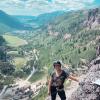- 1. How to Find Landscape Photography Locations
- 1.1. Tips for Finding Your Landscape
- 1.2. Gear to Bring and Clothing to Wear
- 2. Alaska
- 2.1. 1. Denali National Park
- 2.2. 2. Wrangell St. Elias National Park
- 3. Arizona
- 3.1. 3. Antelope Canyon
- 3.2. 4. Grand Canyon National Park
- 3.3. 5. Sedona
- 4. California
- 4.1. 6. Yosemite National Park
- 4.2. 7. Big Sur
- 4.3. 8. Joshua Tree National Park
- 5. Colorado
- 5.1. 9. Black Canyon of the Gunnison National Park
- 5.2. 10. Telluride
- 5.3. 11. Rocky Mountain National Park
- 5.4. 12. Rattlesnake Canyon
- 6. Florida
- 6.1. 13. Everglades National Park
- 6.2. 14. Big Talbot Island State Park
- 7. Hawaii
- 7.1. 15. Haleakala National Park
- 7.2. 16. Kauai
- 7.3. 17. Molokai’s Halawa Valley
- 8. Idaho
- 8.1. 18. Craters of the Moon National Monument
- 9. Maine
- 9.1. 19. Acadia National Park
- 10. Michigan
- 10.1. 20. Pictured Rocks National Lakeshore
- 11. Montana
- 11.1. 21. Glacier National Park
- 11.2. 22. Mammoth Hot Springs
- 12. Nevada
- 12.1. 23. Death Valley National Park
- 12.2. 24. Lake Tahoe
- 13. New Mexico
- 13.1. 25. White Sands National Monument
- 13.2. 26. Bisti Badlands
- 14. New York
- 14.1. 27. Watkins Glen State Park
- 15. Oregon
- 15.1. 28. Highway 101
- 15.2. 29. Mt. Hood
- 16. Texas
- 16.1. 30. Big Bend National Park
- 16.2. Utah
- 16.3. 31. Bryce Canyon National Park
- 16.4. 32. Moab
- 16.5. 33. Zion National Park
- 17. Washington
- 17.1. 34. Mount Rainier National Park
- 17.2. 35. Olympic National Park
- 18. Bonus: Wyoming
- 18.1. 36. Jackson Hole
- 19. Tag Us In Your Photos
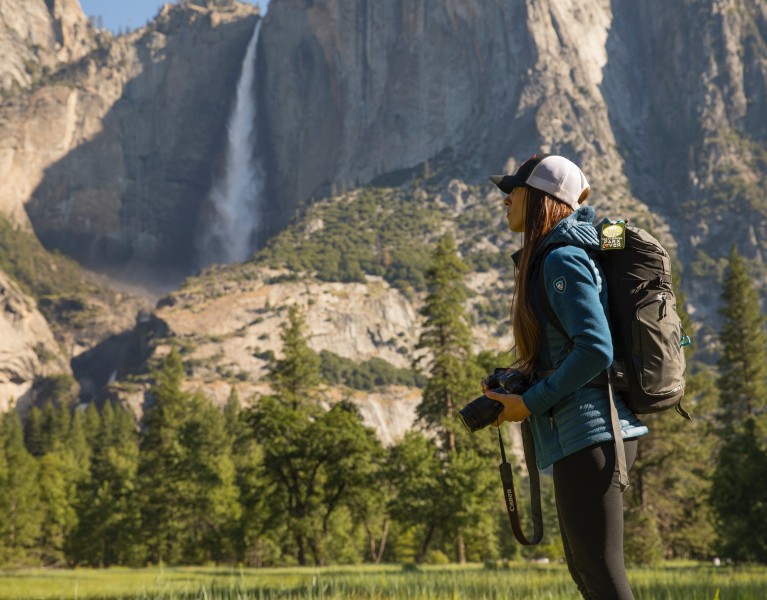
35 Landscape Photography Spots You Should Visit in the U.S.
Table of Contents [Show]
Landscape photography combines a passion for the outdoors with a passion for capturing a part of the world as it exists for a certain moment in time. Nature photographers also find and share the beauty in each outdoor adventure.
There is plenty of beauty to go around: the United States is home to stunning scenery across its 2.3 billion acres. There are 63 official national parks; more than 400 nationally protected sites, including 154 national forests; more than 70,000 named mountains; and thousands upon thousands of miles of shorelines, from secluded lakes to busy beaches. The United States offers endless opportunities for landscape photographers to master their art and appreciate the beauty of Mother Earth.
How to Find Landscape Photography Locations
Many of the locations on our list are national parks, often photographed using the same subject from the same angle. As a photographer, it’s vital to find a unique perspective. From world-renowned national parks to camping in untouched backcountry, here are some tips on how to find captivating landscapes for photography.
Tips for Finding Your Landscape
- Look at other local photographers work from your area of interest, and draw inspiration from what you like.
- Explore outdoors as much as you can.
- Use Google Earth to discover a different nearby location.
- Use other sites, like 500px, Instagram, or hiking apps or websites.
- Experiment with different angles, distances, times of day, and weather conditions.
Gear to Bring and Clothing to Wear
Your gear will influence the quality of your photos. Keep in mind, bigger doesn’t necessarily mean better, especially if you're going hike long distances. The clothing you choose to wear is also important. Opt for items with quiet fabric and lots of pockets to improve your experience.
Read the KUHL Guide to Nature Photography Clothing & Personal Gear.
Once you’ve practiced your landscape photography skills, venture to the location of your desire for the chance to snap something seriously special. Here are 35 top picks.
Alaska
1. Denali National Park
Create an unforgettable moment as you witness North America’s tallest peak in Denali National Park. Below the 20,310-foot peak is more inescapable beauty. See the sky’s reflection at Wonder Lake, or point and shoot the ancient glaciers and colorful plant life, including hundreds of floral species and the state flower, the forget-me-not.
Read the Insider’s Guide to Denali National Park & Preserve
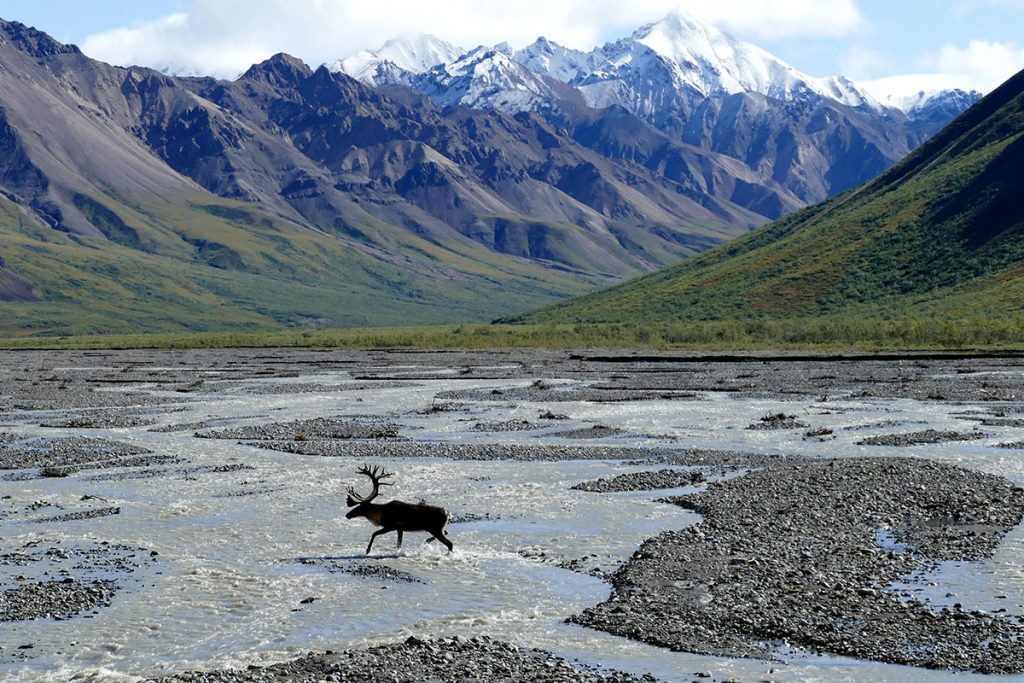
2. Wrangell St. Elias National Park
It’s no surprise that there are some truly epic photography opportunities in the country’s largest national park. This wilderness wonderland offers a solitary escape perfect for those who look to photograph more remote parts of the country.
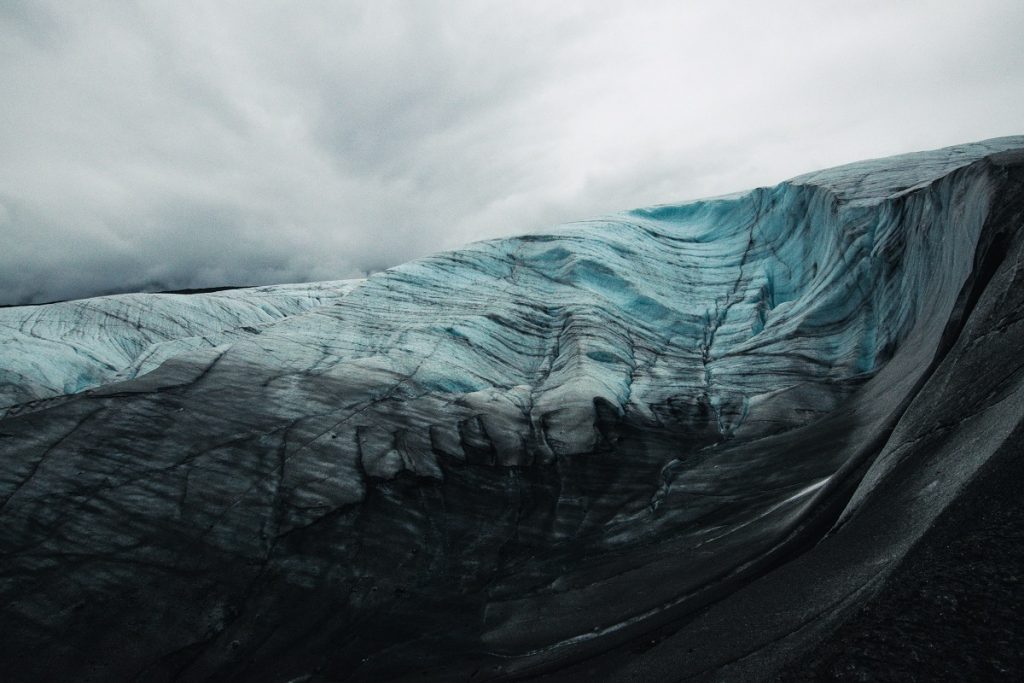
Arizona
3. Antelope Canyon
Millions of years of erosion formed this aesthetic, wave-like slot canyon. During spring and summer, the sun shines through the area’s opening and forms majestic light beams that upgrade any photo. Guided tours are required, so make sure to reserve in advance. On the bright side, this means your photos are less likely to be tainted by massive crowds.
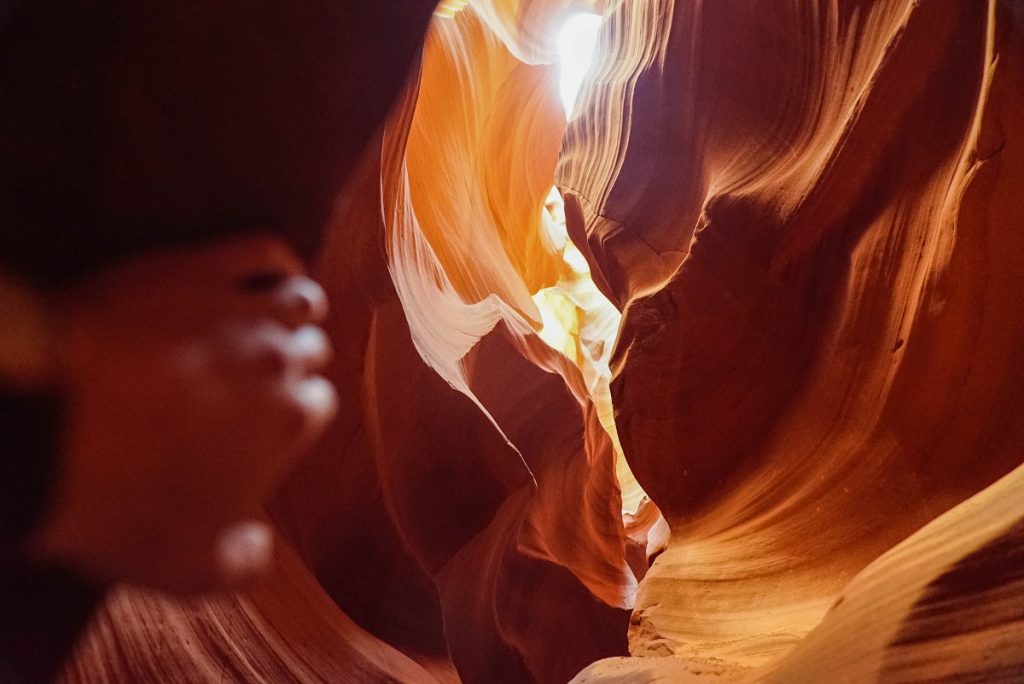
4. Grand Canyon National Park
It can be a challenge to capture an image that accurately represents this massive national park. Its earthy tones and immense depths offer superior and compelling imagery. Because the Grand Canyon is one of the most visited parks in the country, do your best to stay away from the crowds and discover unique angles to view the famous vast landscape. The South Rim is the most visited, and undoubtedly worth the visit, but venture to all sides to garner your own perspective.
Read an Insider’s Guide to Camping Near the Grand Canyon
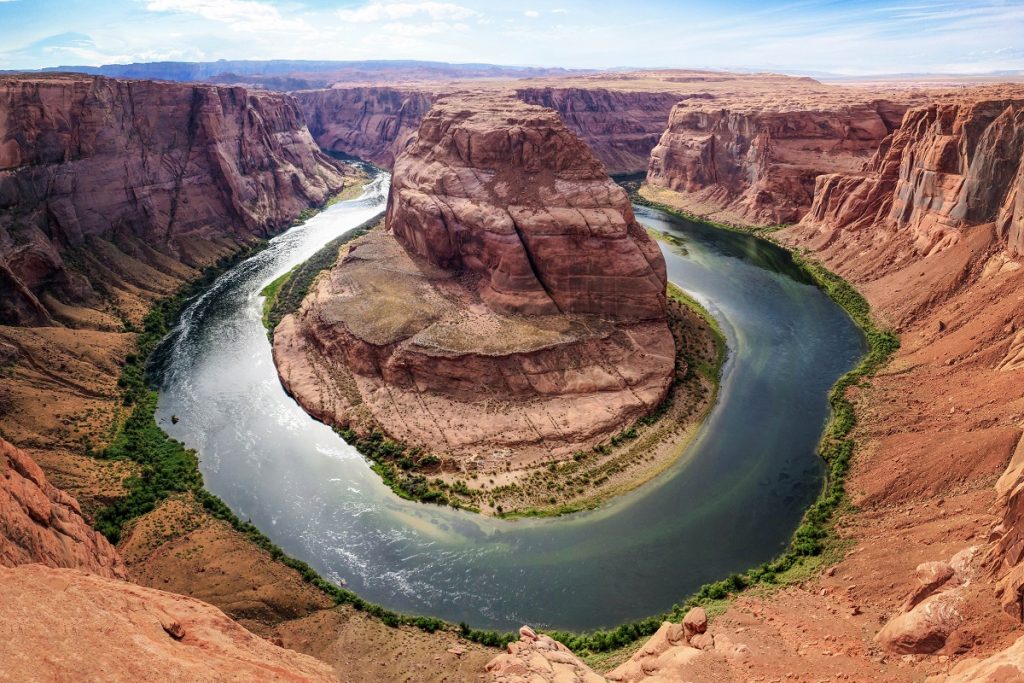
5. Sedona
Photograph cacti-filled desert landscapes in this scenic Arizona town. Its vivid blue skies often contrast against the gorgeous red rock formations, leaving photographers in awe of Sedona’s scenic trails and overlooks.
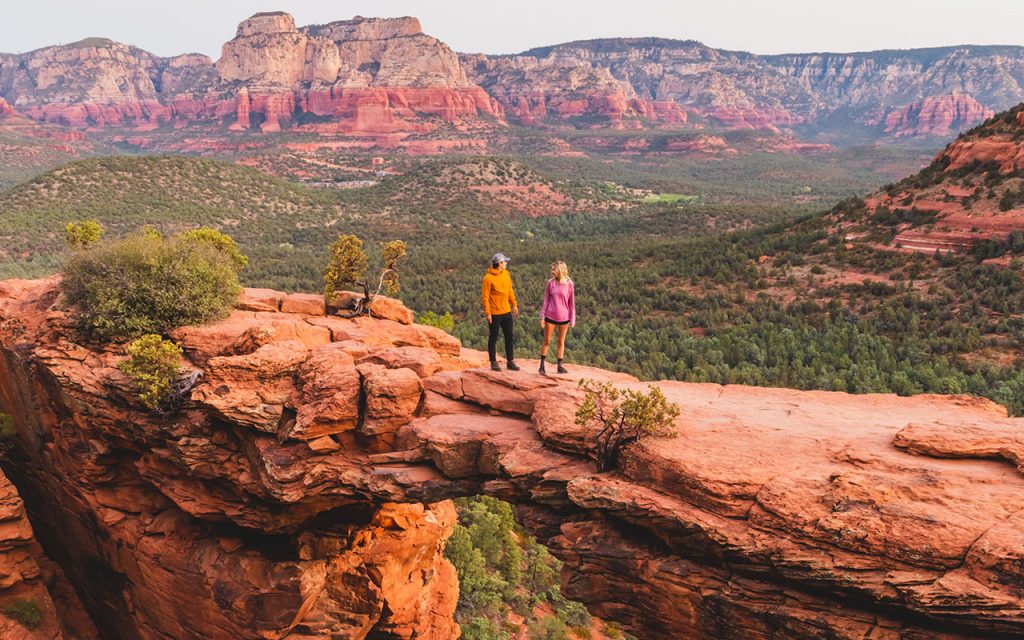
California
6. Yosemite National Park
In Yosemite Valley, find the iconic big walls of Half Dome and El Capitan. Visit the vibrant lush highland of Tuolumne Meadows. Beyond the more touristy parts of Yosemite lies much more stunning scenery. If you want to beat the crowds, try capturing a landscape in the High Sierra, which is 4,000 feet above the well-known Valley, and has plenty of worthy viewpoints, trails, and even campgrounds. At 761,266 acres, it could be a lifelong challenge to photograph all of the landscapes in Yosemite. You’ll be planning your return trip before you even leave!
Read Must-See Sights in Yosemite Park
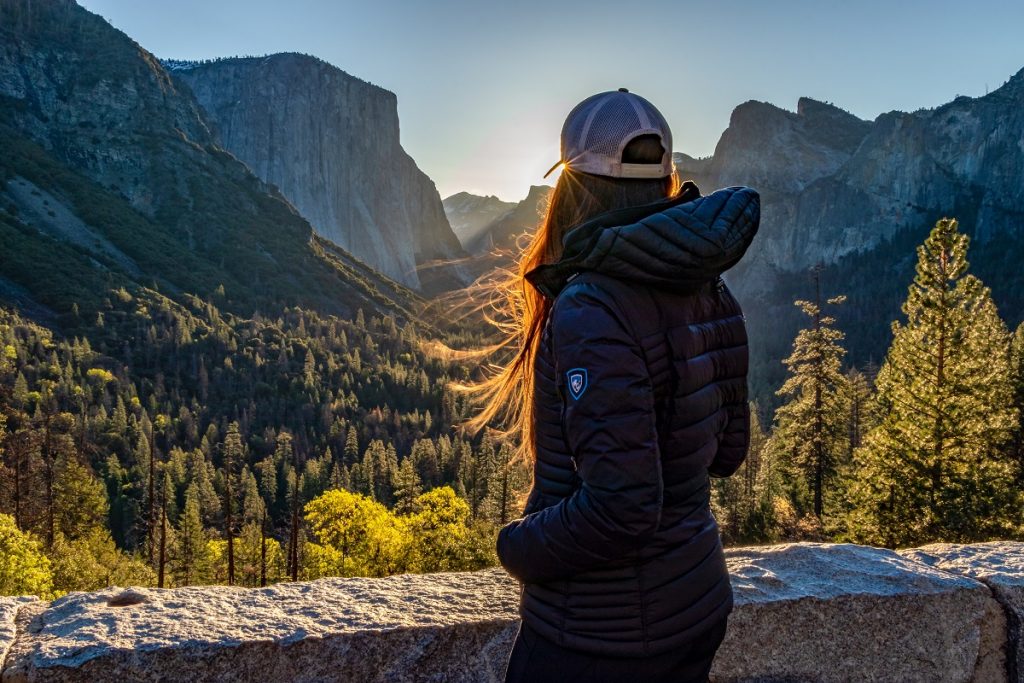
7. Big Sur
Big Sur is a California road trip staple, and its rocky coastlines, crystal clear water, and brilliantly blooming flowers are a photographer’s dream. In the spring, you’ll find bright magenta flowers along the Pacific Grove Coastline that contrast perfectly against the blue sky and ocean. There are many scenic spots ideal for photography, including Bixby Bridge and Hurricane Point, but if you have time, explore them all.
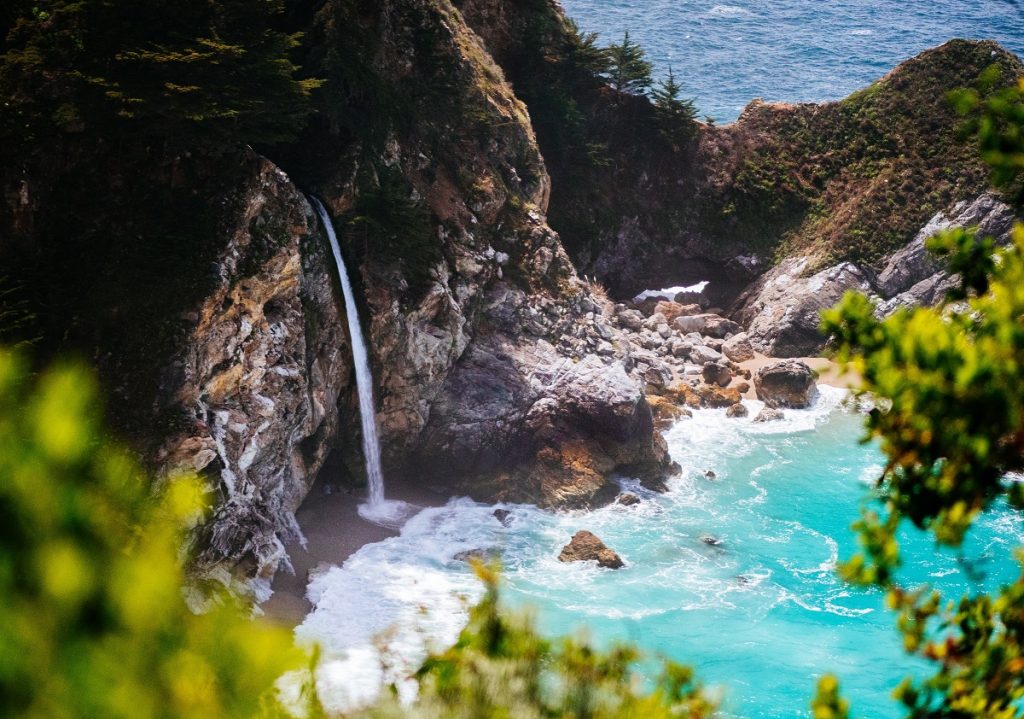
8. Joshua Tree National Park
This otherworldly national park features a vast ecosystem full of immense boulders, fascinating Joshua trees, and a wide variety of other desert plants and animals. From Jumbo Rocks to the Keys View, its surreal geological features will leave any nature photographer more than snap happy.
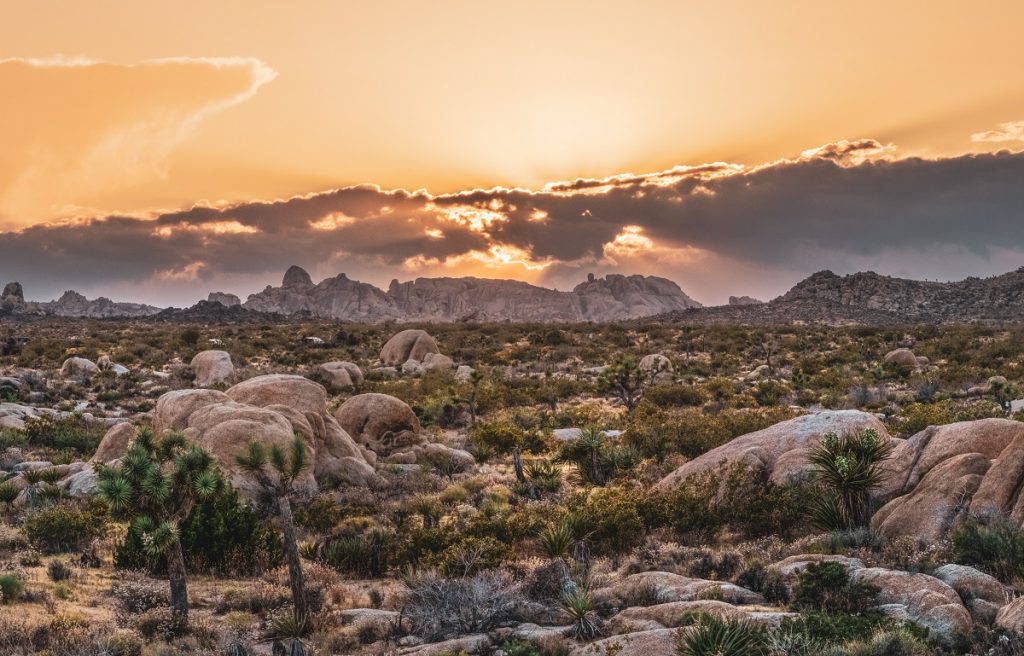
Colorado
9. Black Canyon of the Gunnison National Park
It’s difficult to access the floor of this narrow, deep, dark canyon, but its many overlooks provide expansive views of the surrounding sheer black cliffs that engulf the Gunnison River from 2,000 feet above. Some of the most memorable views are along Rim Drive, which features 12 incredible overlooks, including Painted Wall and Sunset View.
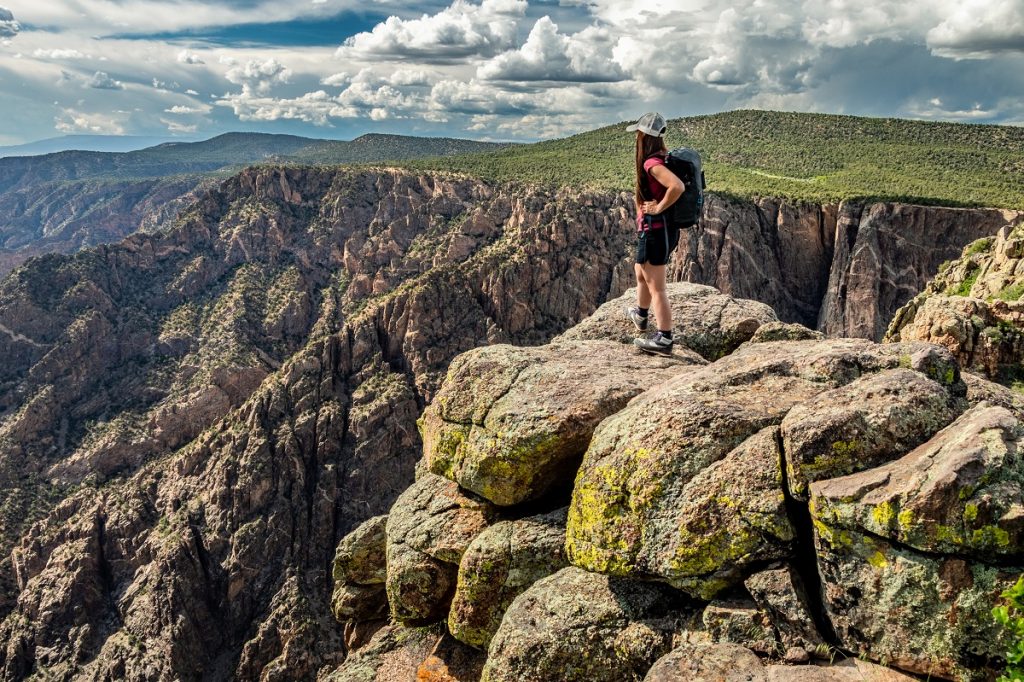
10. Telluride
Telluride lies in southwest Colorado and is tucked away in a former Victorian mining camp surrounded by rocky mountain peaks. The town itself is charming, but the nature surrounding it offers many photo ops, including 365-foot Bridal Veil Falls.
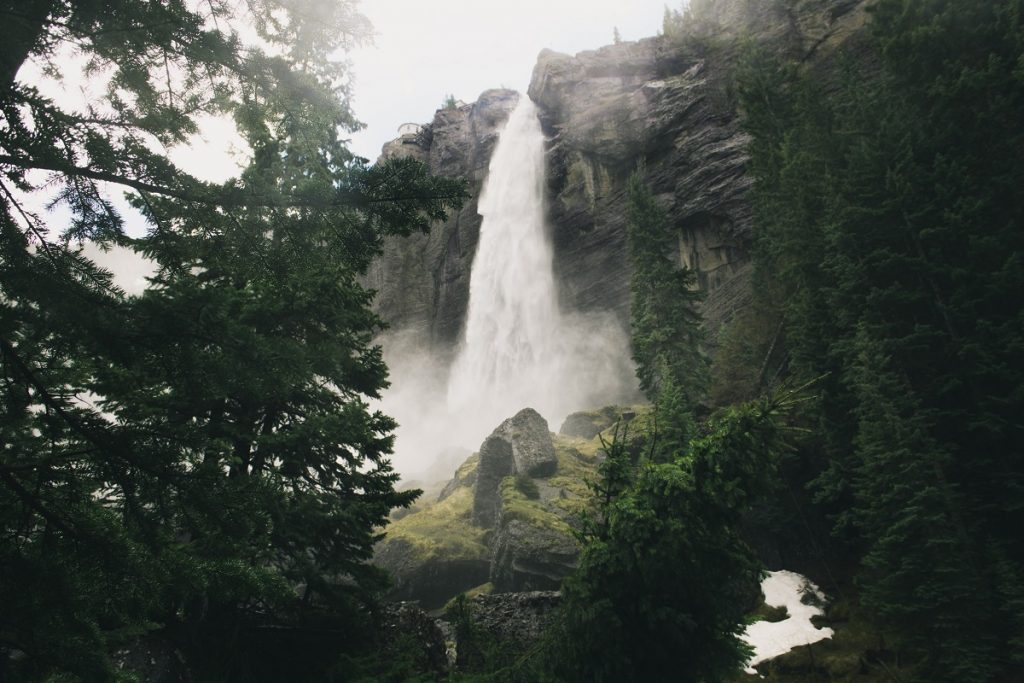
11. Rocky Mountain National Park
With 77 mountain peaks, this elevated national park will make your jaw drop. Longs Peak is the highest, standing at 14,259 feet. Shimmering lakes, vibrant wildflowers, and evergreen trees will guarantee a photo that deserves a frame.
Read Insider’s Guide to Rock Mountain National Park
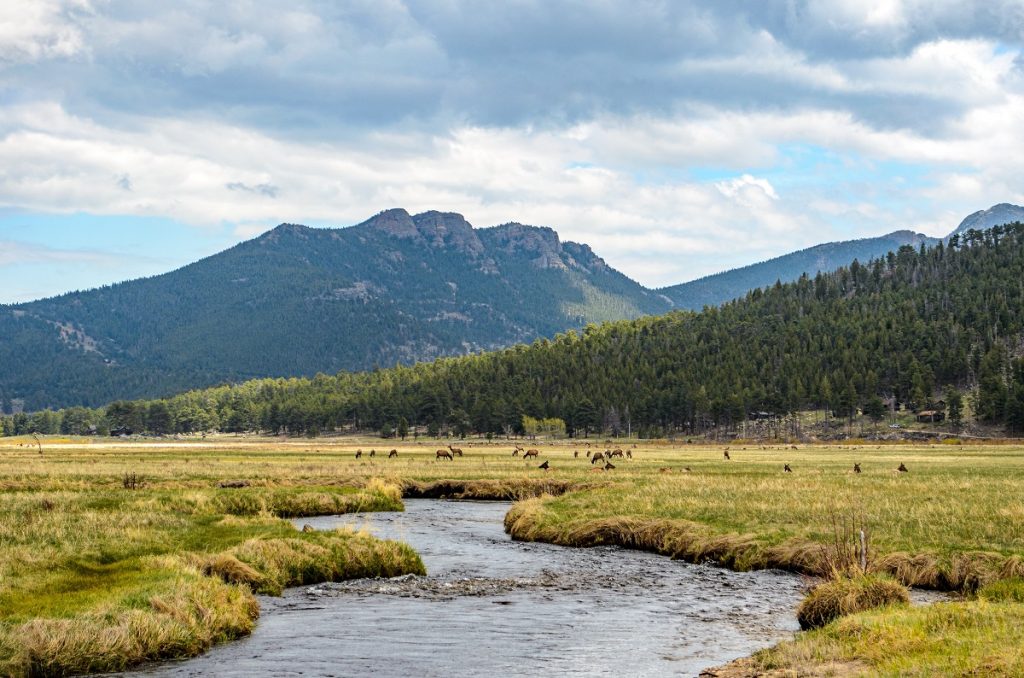
12. Rattlesnake Canyon
Rattlesnake Canyon, located in the rugged landscapes of Colorado, presents a stunning display of geological marvels. Famous for its distinctive rock formations and a series of captivating arches, this canyon is a hidden gem for hikers and nature enthusiasts.
Its most notable feature, the Rattlesnake Arches, is a collection of natural sandstone arches that are among the largest and most spectacular in North America. The canyon also offers a diverse range of flora and fauna, with a backdrop of panoramic vistas that change hues with the setting sun, making every visit a memorable experience.
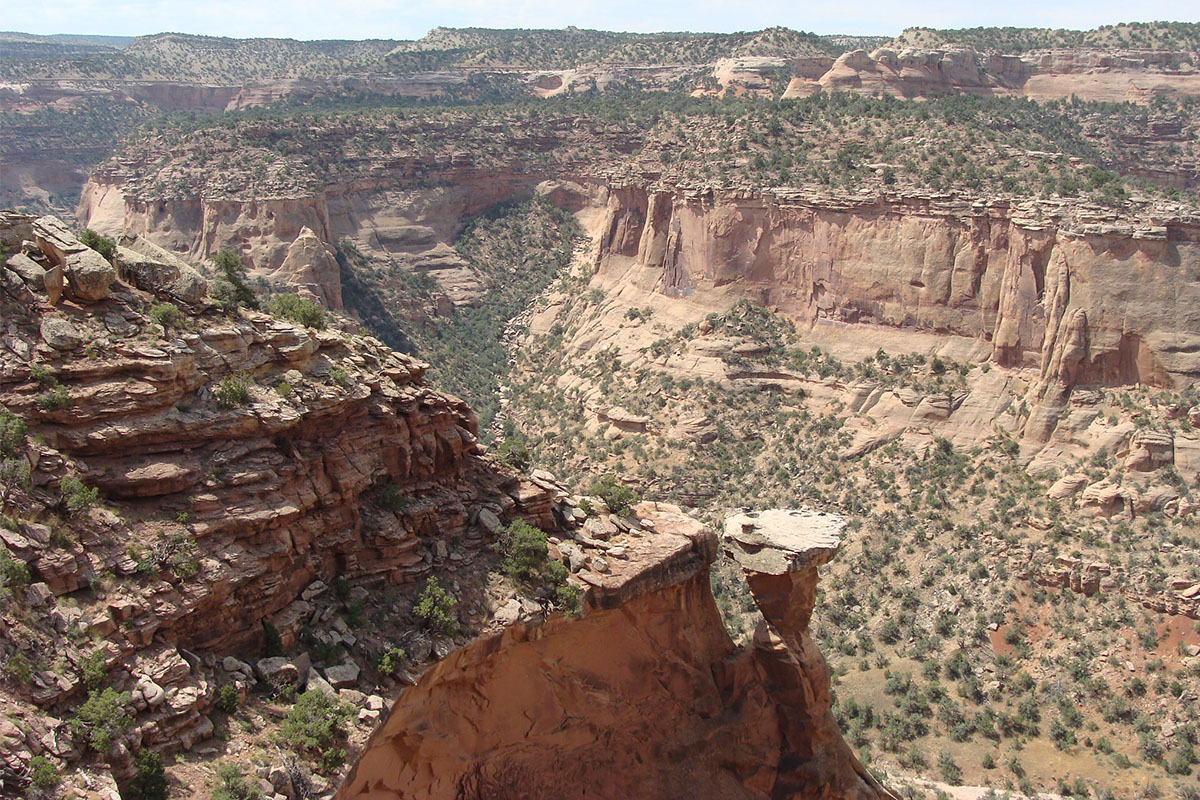
Florida
13. Everglades National Park
This world-class subtropical wetland features nine distinct habitats home to manatees, alligators, and even the Florida Panther. It is best known for its grassy prairies, picturesque mangroves, and Long Pine Key Lake, as well as its hundreds of miles of kayaking water trails. With such rich greenery, it’s no surprise that the Everglades receive about 60 inches of rain per year. Sunrise and sunset allow for exceptional photography, as you can often see the rainbow sky reflect off the park’s water system.
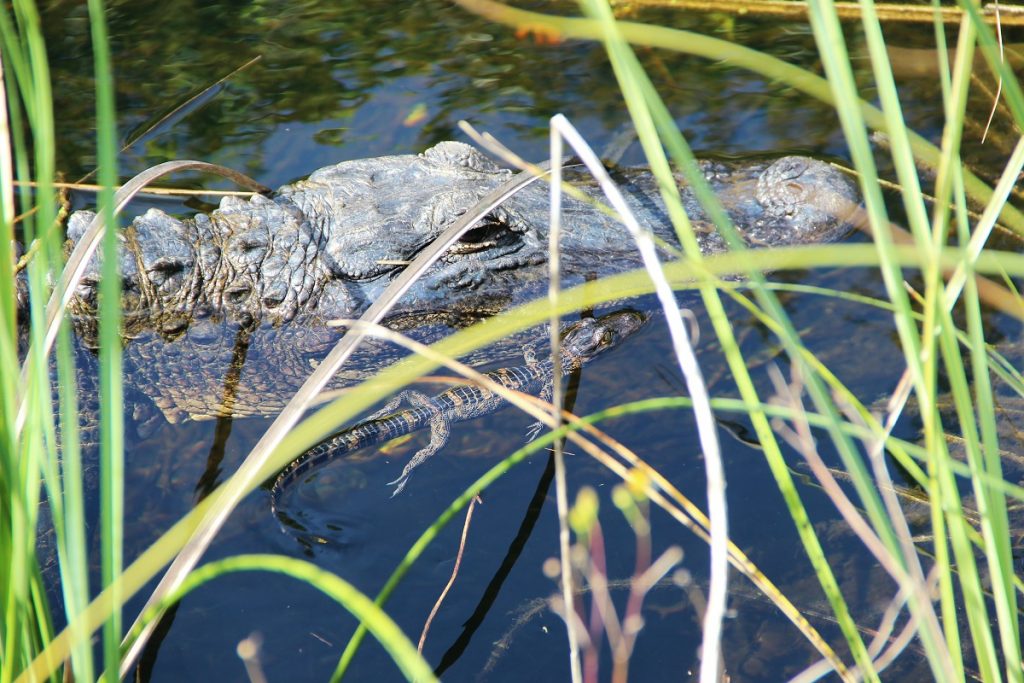
14. Big Talbot Island State Park
Oaktree skeletons lie scattered across Boneyard Beach, a sandy shore that stretches one mile along this state park. It's quite close to Jacksonville, but this surreal landscape will feel a world away from its crowded counterpart, especially when against a rich rosy sunset.
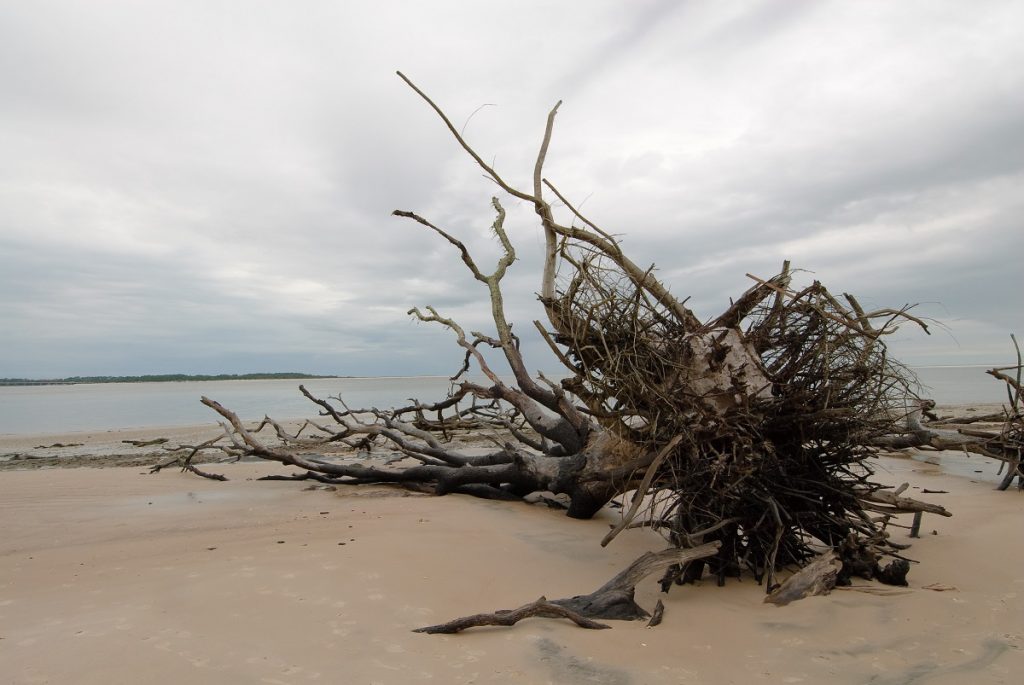
Hawaii
15. Haleakala National Park
The Haleakala volcano is estimated to be about one million years old! If that’s not reason enough to come to photograph the park, there are also several microclimates and unbeatable scenery. The Pools of ‘Ohe’o, also known as the Seven Sacred Pools, is a favorite among locals and travelers alike. Its series of waterfalls, pools, cliffs, and rainforest complement each other and create an unbelievable view.
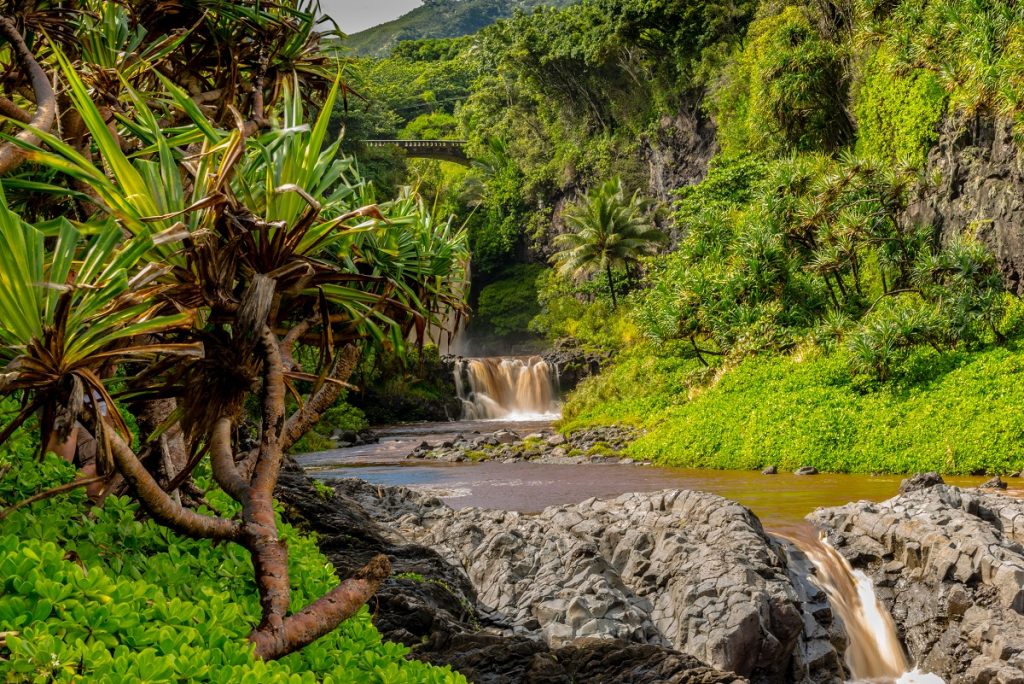
16. Kauai
Part of the Hawaiin archipelago, this island is nicknamed “the Garden Isle'' due to its lush tropical rainforest. That paired with intense cliffs, aqua ocean, and gorgeous sunsets offer a compelling color palette for photography lovers. The Kalalau Lookout at Kokee State Park offers unbeatable views, as well as those overlooking Waimea Canyon.
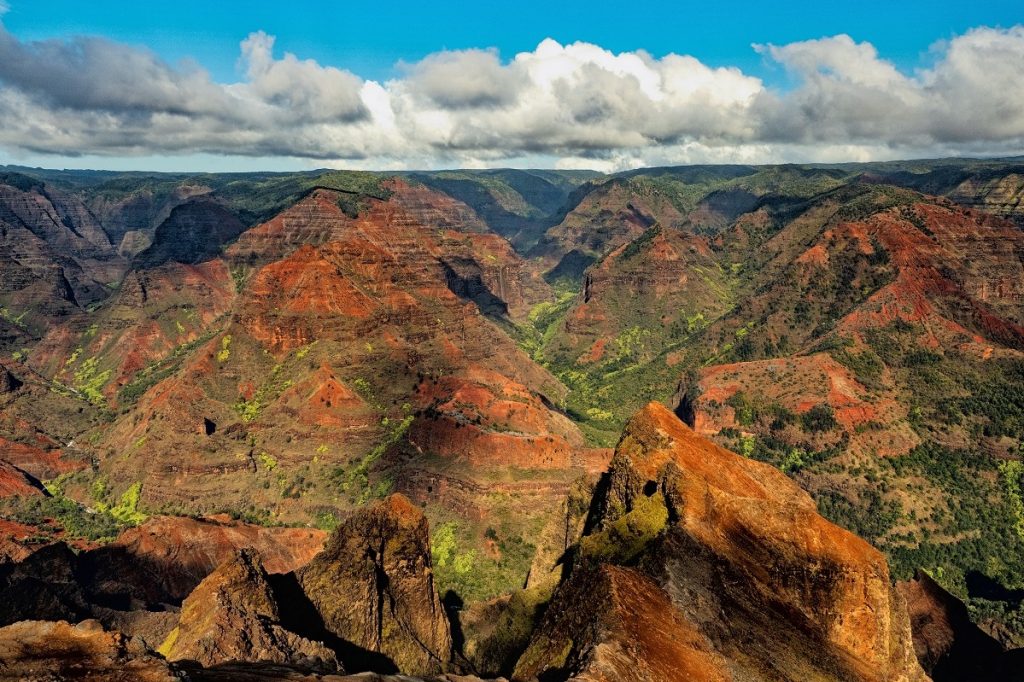
17. Molokai’s Halawa Valley
This insanely green valley is centered around a 250-foot waterfall, which can be seen from miles away. To reach the bottom of the waterfall, you’ll need to hire a guide, however, the views from afar are likely just as satisfying.
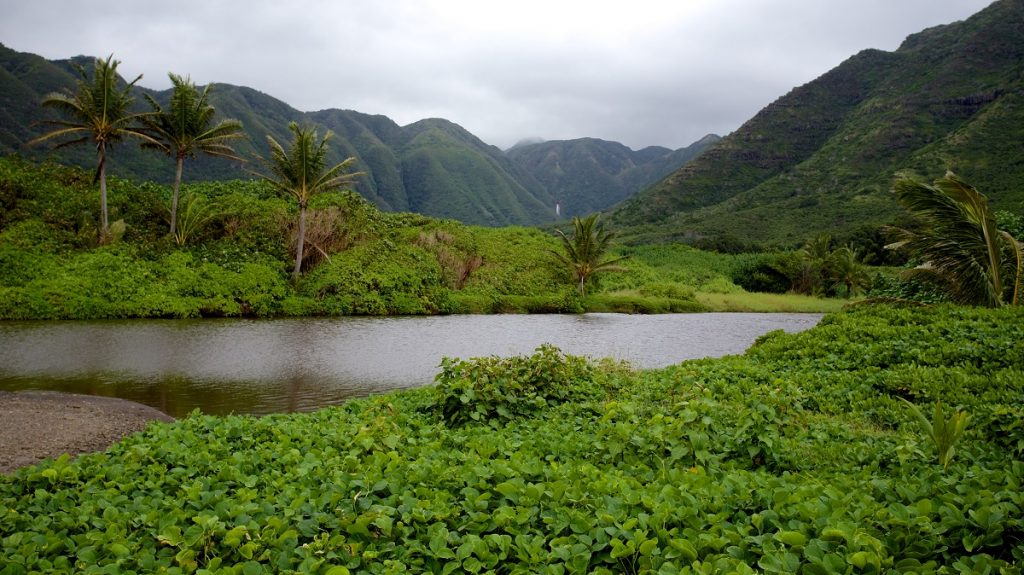
Idaho
18. Craters of the Moon National Monument
This intriguing landscape was formed by more than 60 lava flows that erupted thousands of years ago. Photograph the national preserve’s many cinder cones, sagebrush, and jet black cave formations.
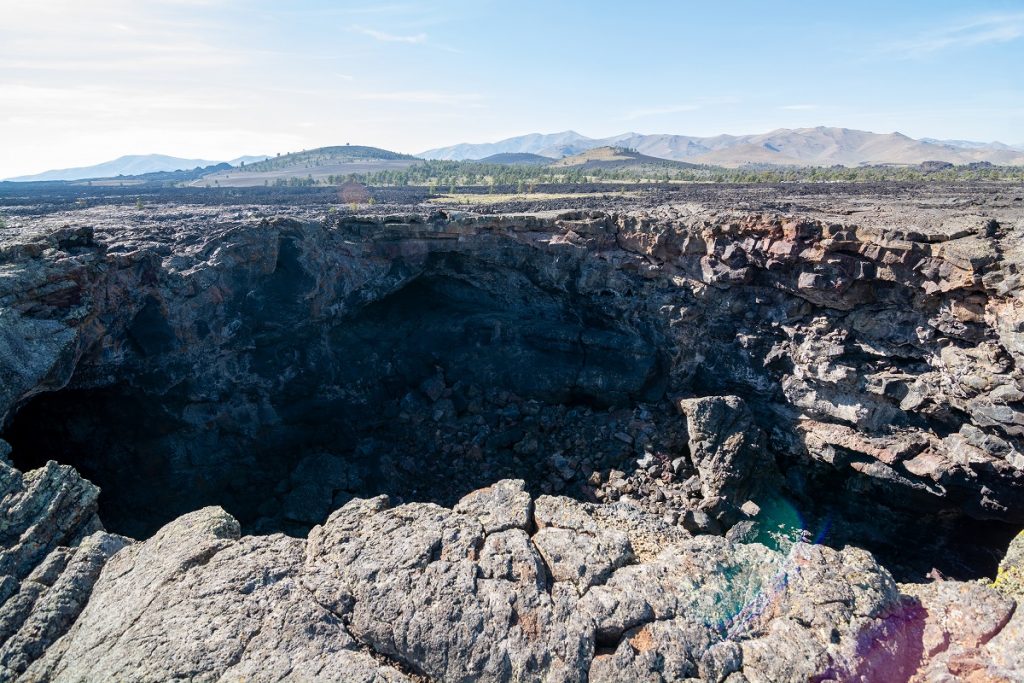
Maine
19. Acadia National Park
Rocky cliffs tower over pristine coastlands in this national park. While sunny weather is more enjoyable, this park may be more photogenic when a storm rolls through. Dense fog often covers Acadia, making for dramatic and intense imagery. But regardless of the weather, there are tons of lakes, ponds, and waterfalls to explore, the most popular being Jordan Pond and Eagle Lake. Spring is also a great time to play with your shutter speed at one of the many waterfalls, such as Hadlock Falls.
If you have time after soaking in Acadia’s vast wilderness, drive three hours south to capture a few images of the Portland Head Light, a truly gorgeous and historical lighthouse standing on a rocky shoreline in Portland, Maine.
Read Insider’s Guide to Acadia National Park and Acadia National Park Camping Guide.
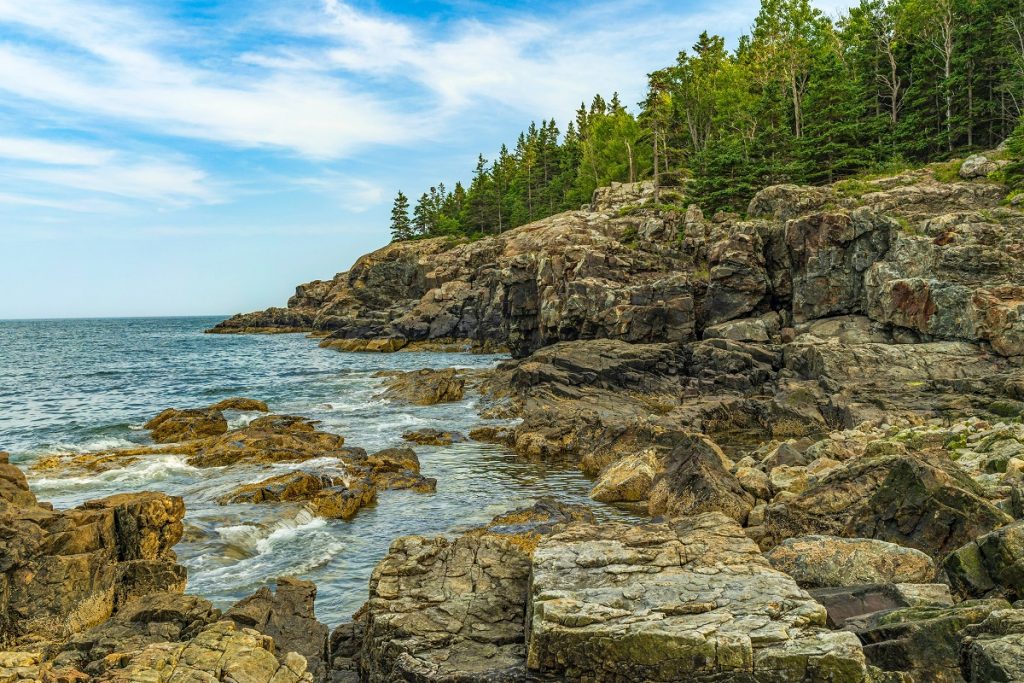
Michigan
20. Pictured Rocks National Lakeshore
This is not your average lakeshore. Through your lens, you’ll find sandstone cliffs, sand dunes, rich woodlands, and peaceful beaches. Spring is an especially excellent time to bring your camera along, as there will be beautiful wildflowers throughout the many hiking trails.
Discover Michigan's Rustic Campgrounds
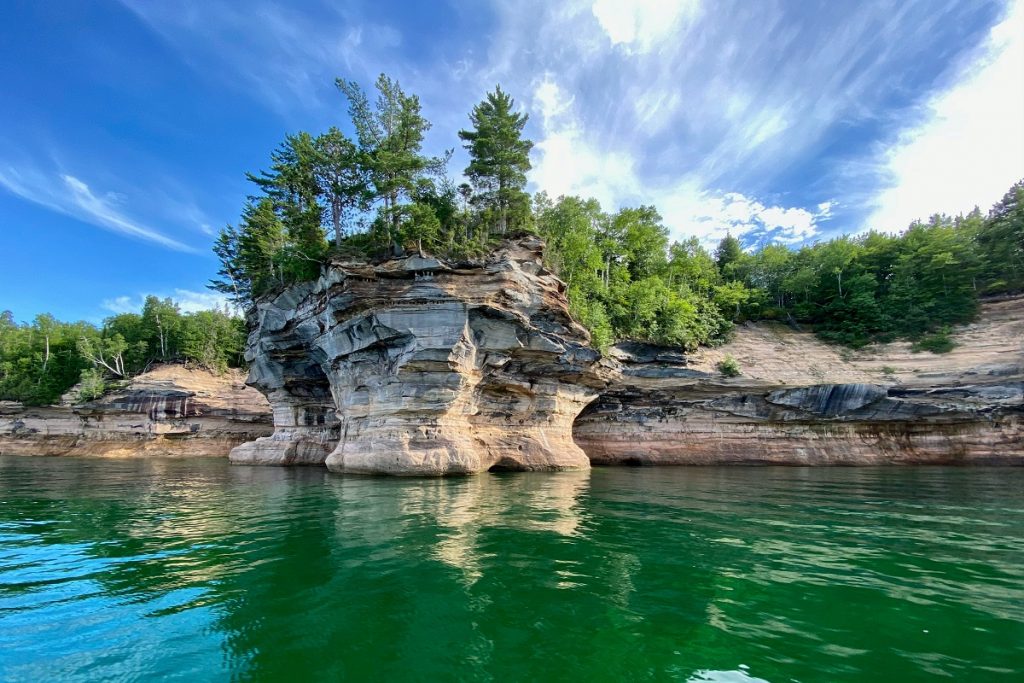
Montana
21. Glacier National Park
Located at the northern tip of Montana right below the Canadian border, Glacier preserves 1 million acres of glacier-carved peaks and valleys. After a frigid winter, late spring and summer are ideal times to go photograph its diverse, colorful landscape full of turquoise lakes, cascading waterfalls, and abundant wildlife. There are 71 species of mammals! The 50-mile long Going-to-the-Sun Road is a great option for photographers as it crosses the Continental Divide and connects the west and east sides of the park. You’ll have plenty of options to hike to and photograph more remote areas of the park as there are more than 700 miles of hiking trails.
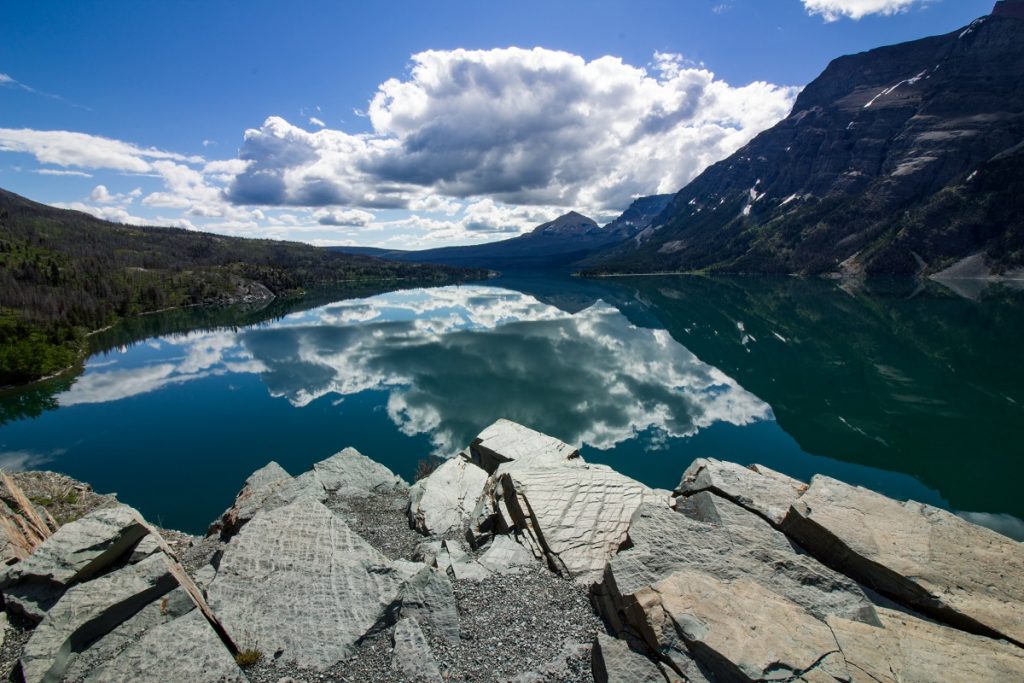
22. Mammoth Hot Springs
In the northern portion of Yellowstone National Park, you’ll find a geothermal environment that produces truly striking imagery. Witness the steam from hot springs interacts with sunlight and produce intriguing visuals, especially combined with the surrounding limestone stalagmites and stalactites.
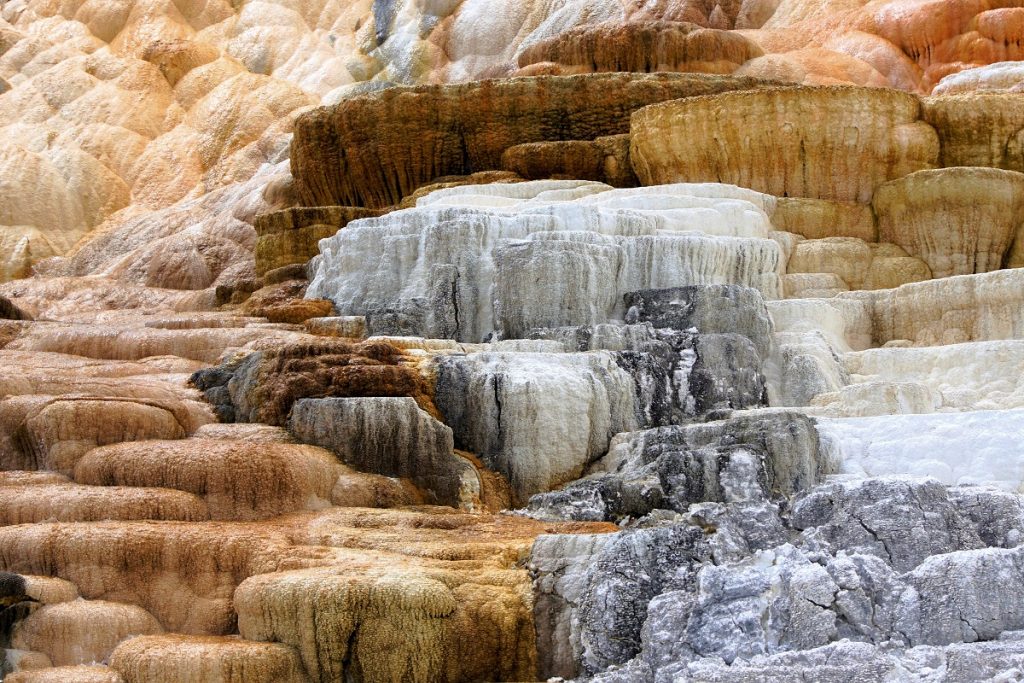
Nevada
23. Death Valley National Park
Known for its desert canyons and salt flats, Death Valley is a far cry from the abundance of life you’ll see in many other national parks. It’s the lowest point in North America at 282 feet below sea level, and it’s one of the hottest places on earth. Winter and early spring are the best times to go seasonally, and sunrise makes for stellar photos. Zabriskie Point’s erosional landscape is particularly photogenic, as well as the infrequent super bloom of wildflowers that occurs only after a winter with heavy rain. Spring is a great time to witness wildflowers, whether the super bloom is happening or not.
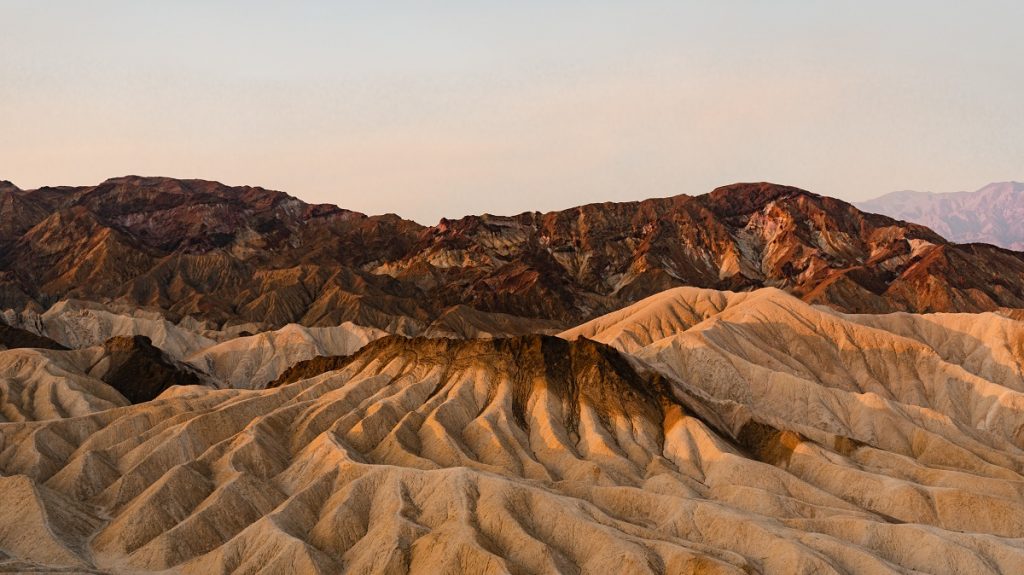
24. Lake Tahoe
This is the largest alpine lake in North America with more than 72 miles of shoreline, about half of which lies in Nevada Its water is some of the purest in the world, making for some seriously stellar imagery. Photograph one of its many shorelines with surrounding rocks and forest green trees. Secret Cove is one of the most beautiful lookouts on the Nevada side, but be aware it's a clothing-optional beach! Bring the camera out during winter and spring to avoid a photobomb from a nude sunbather.
Don't forget to check out our Lake Tahoe camping guide for more info on where to stay during your visit.
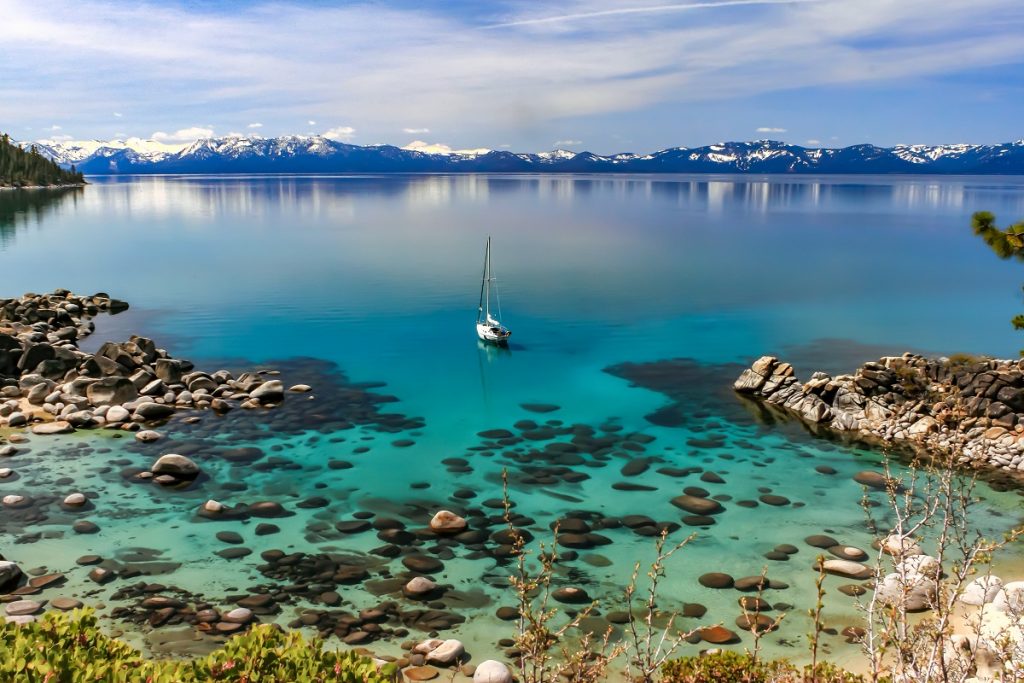
New Mexico
25. White Sands National Monument
Photograph the world’s largest gypsum sand dunes at the White Sands, which covers 145,762 acres. This sea of sand, as well as its unique vegetation, is especially gorgeous during a vibrant sunrise or sunset, which will also usually offer more pleasurable weather.
Check out the 4 Clothing Essentials Needed for Desert Hiking
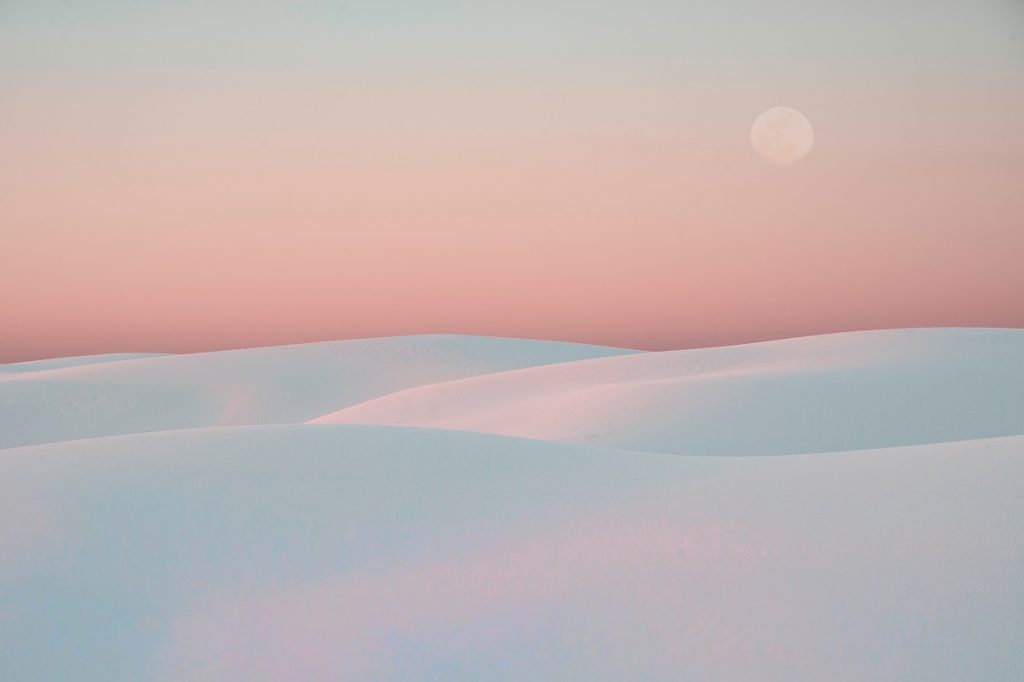
26. Bisti Badlands
Frame this extremely unique scenery full of hoodoos, desert spires, arches, and more. The Bisti Badlands is a true wilderness area with no facilities or marked trails, so bring plenty of water and sun protection if you're going during the day. Night photography is well worth the effort at Bisti Badlands as well. Because service can be unreliable, a GPS app that doesn’t need service is essential. Hoodoo City and the Alien Egg Nursery in South Bisti exemplify some of the most surreal appearances in the park.
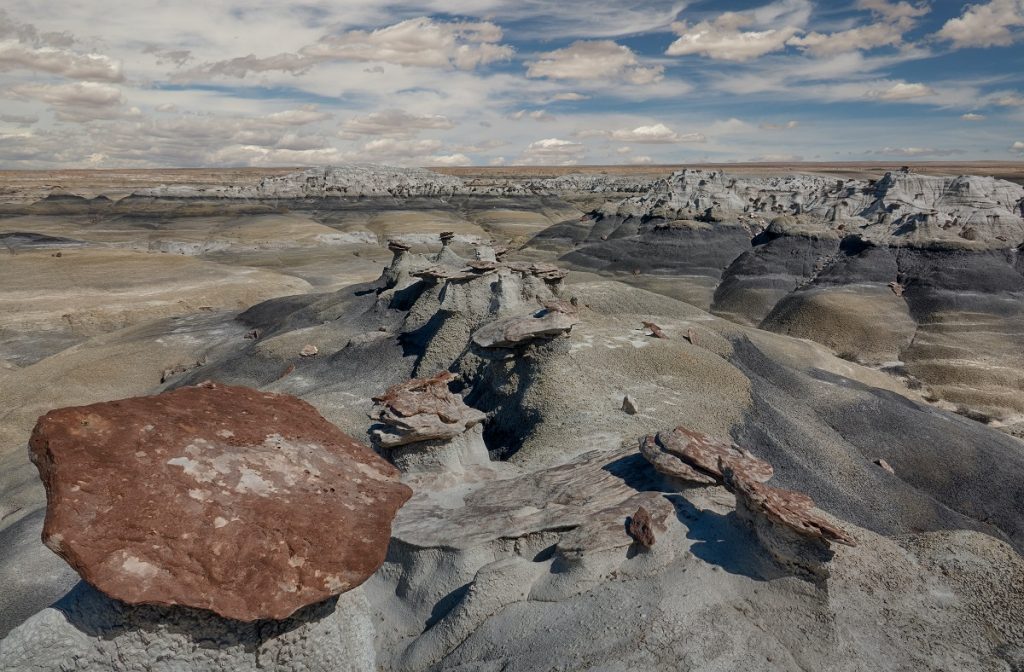
New York
27. Watkins Glen State Park
If you love to play with shutter speed, this park may be for you. The Gorge Trail guides you past 19 waterfalls in less than two miles! You’ll also be surrounded by mossy 200-foot cliffs that seem straight out of a fairytale.
Check out four serene campsites in the New York area.
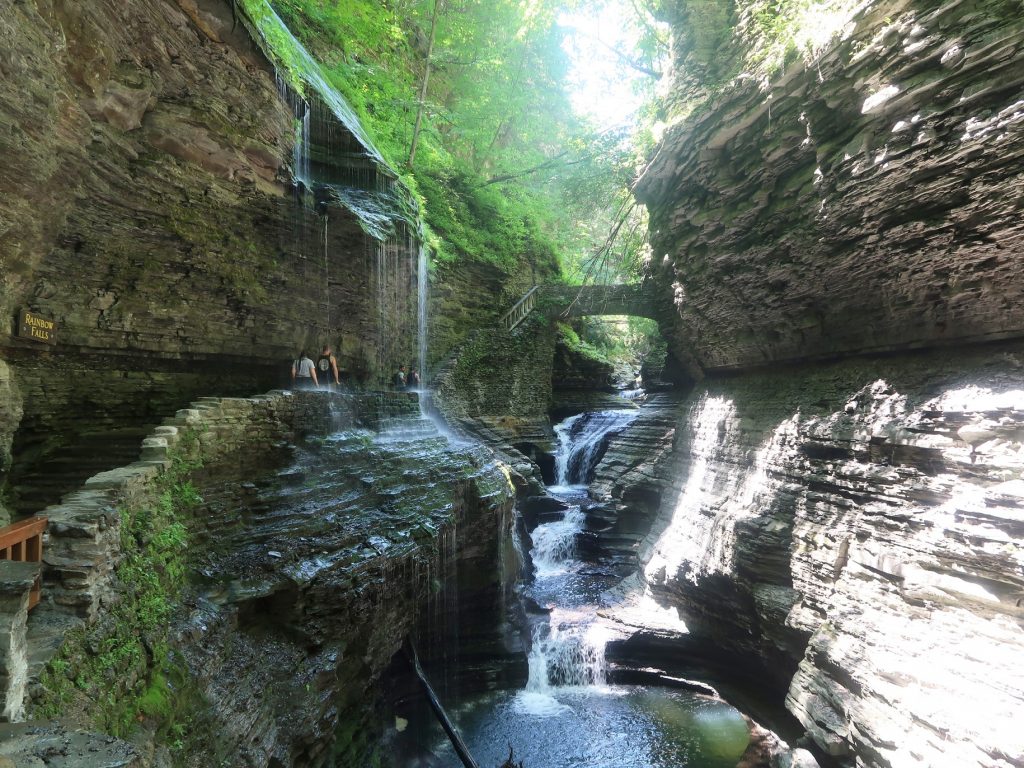
Oregon
28. Highway 101
One could argue this is the most picturesque coastal road in the country, and the best part is its entire coastline is open to the public. This highway runs parallel to the striking coastline that’s over 350 miles long, so you’re sure to discover several lookouts. Highlights include Haystack Rock and Ecola State Park.
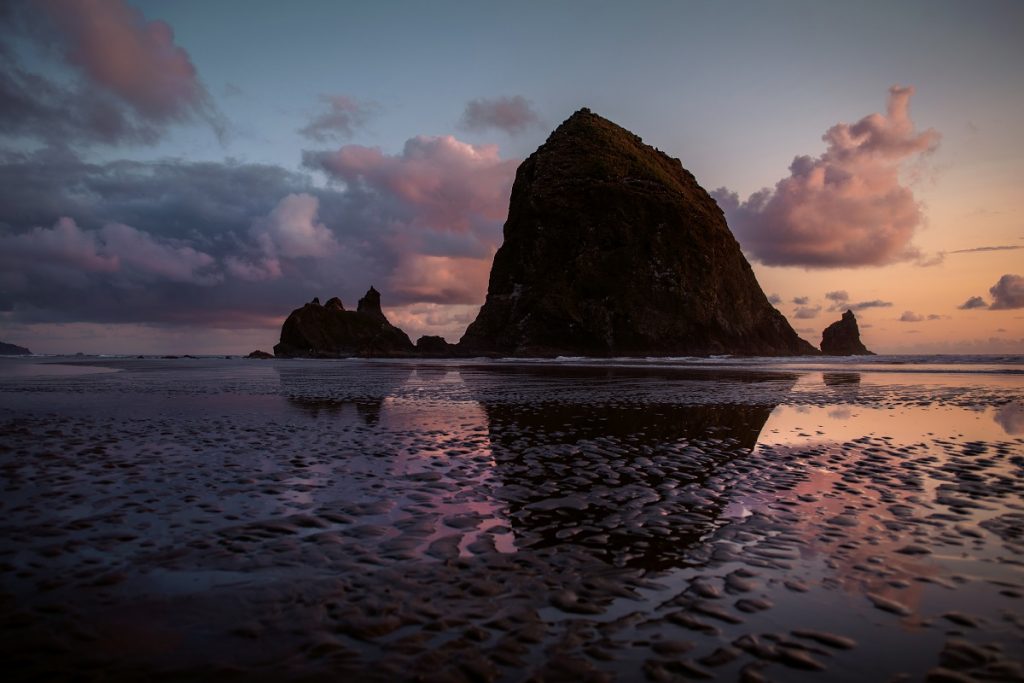
29. Mt. Hood
Oregon’s highest peak is visible from up to 100 miles away, so you can experiment with photographing this dormant stratovolcano from different vantage points. One of the most popular is Trillium Lake and Lost Lake, as you’re likely to see the mountain’s reflection on the water surface.
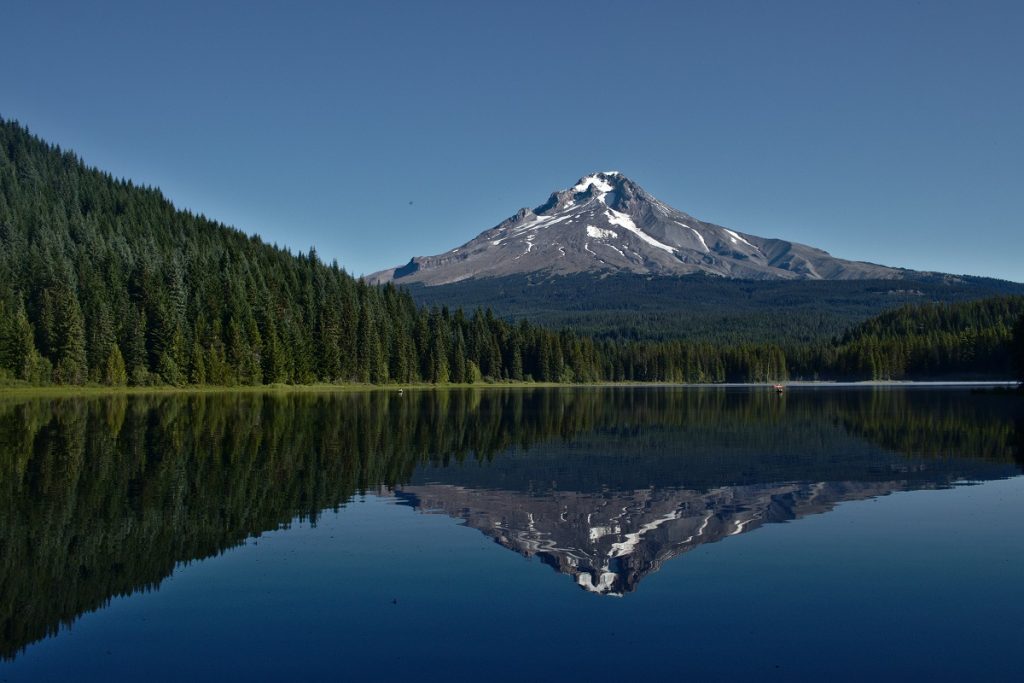
Texas
30. Big Bend National Park
Photograph one of America’s least-visited national parks. The reason is not due to a lack of beauty, but rather a lack of convenience as it's not close to any major cities. This creates one of the darkest night skies in the country, making Big Bend a great spot to advance your skills as a night photographer. At nearly a million acres, you’ll have to plan what you want to see. Rio Grande Village is full of javelinas, roadrunners, and diverse species of birds, for those interested in wildlife and bird photography. Nearby, you’ll find the elegant Santa Elena Canyon, where walls tower 1,500 feet above the calm river. Other popular spots are the Ross Maxwell Scenic Drive and Emory Peak.
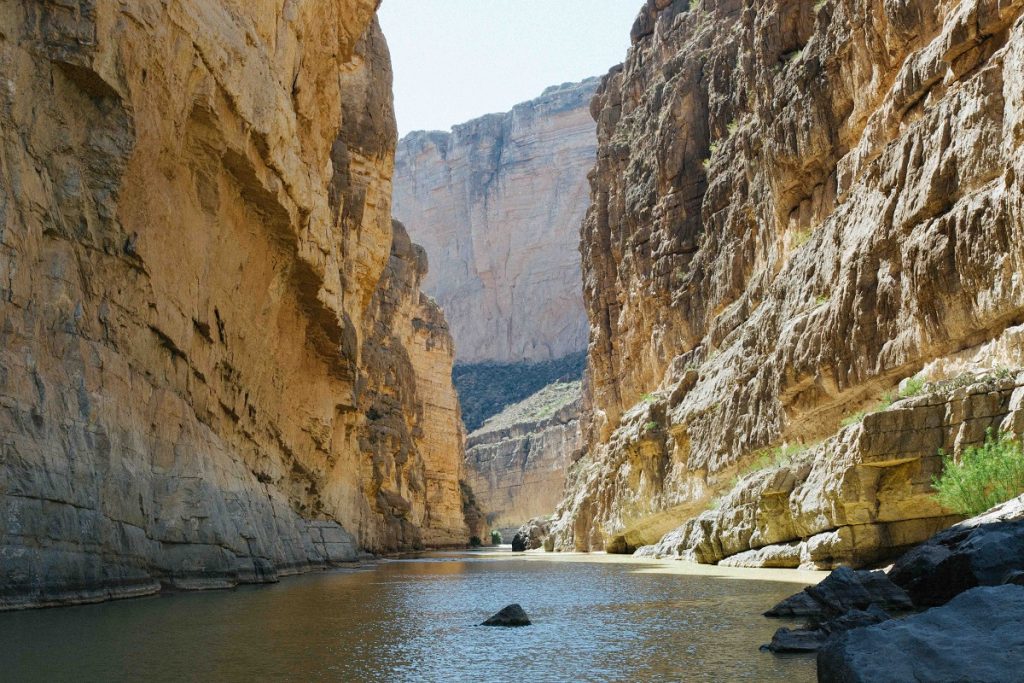
Utah
31. Bryce Canyon National Park
Head to one of the lookouts to view the expansive natural amphitheater formed at Bryce Canyon National Park, filled with otherworldly crimson hoodoos and desert spires. The Queens Garden Trail and the Fairyland Loop Trail are popular options for those who want to venture further into this majestic natural wonderland.
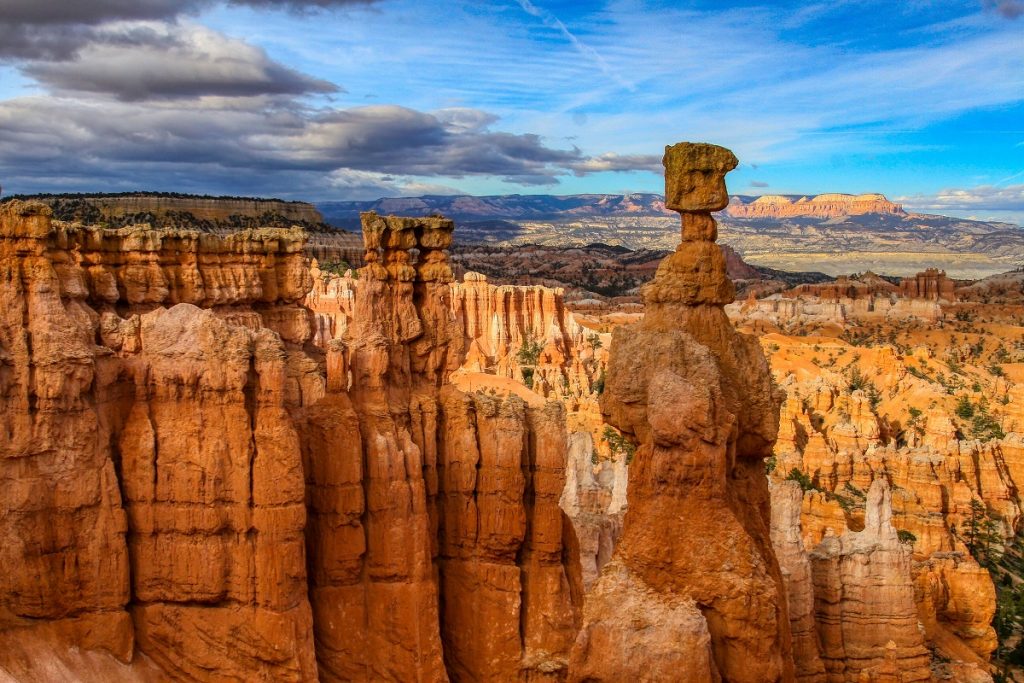
32. Moab
A gateway to both Arches National Park and Canyonlands National Park, there is no shortage of photogenic beauty within a 30-minute drive from the touristy town of Moab. Arches’ Delicate Arch and Canyonlands’ Island in the Sky are particularly scenic areas of interest within each park. But even beyond its national parks, Moab offers plenty of beauty for nature photographers, from the way the green Colorado River winds through and contrasts against its red rocks at Deadhorse Point State Park to the nearby tarns in the La Sal Mountains.
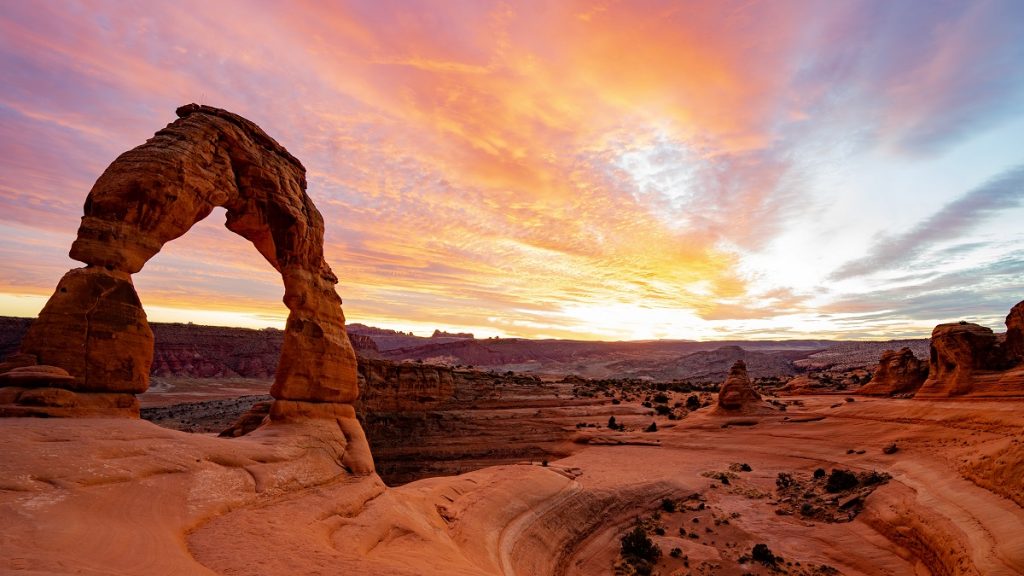
33. Zion National Park
Zion’s earthy tones, thriving plant life, and rushing waters from the Virgin River provide ample opportunities for landscape photography. The narrowest section of Zion Canyon, The Narrows, is an especially attractive location for photography with massive sandstone walls surrounding a calm and pristine riverbed. But you really can’t go wrong photographing all areas of the park, from the Canyon Overlook Trail to the iconic and fear-invoking, supremely steep Angels Landing hike.
Read Zion National Park’s Secret Trails
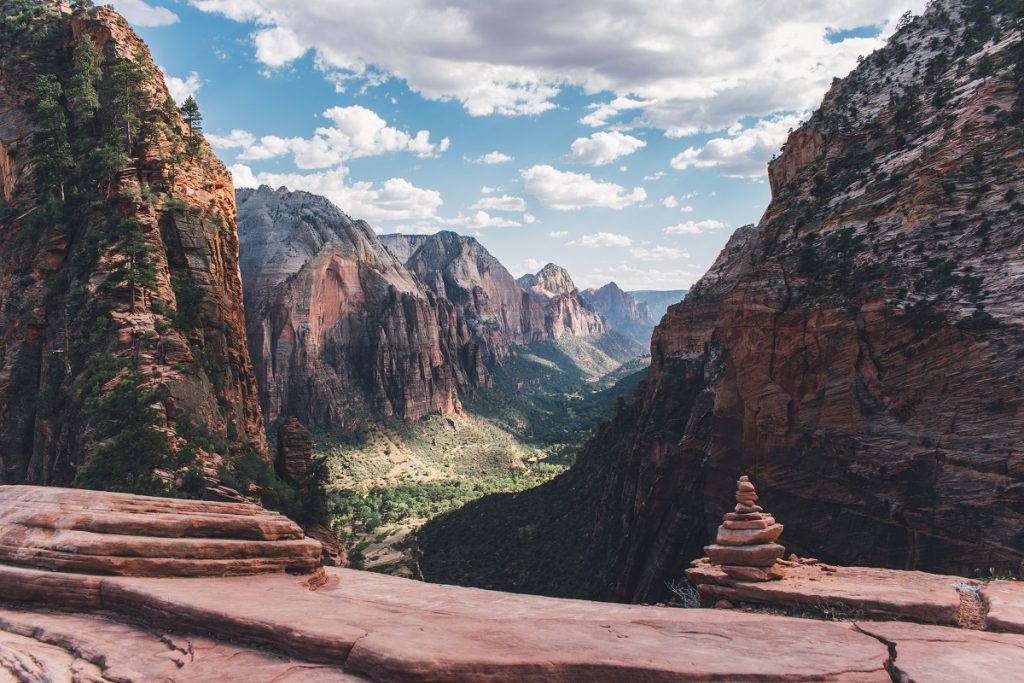
Washington
34. Mount Rainier National Park
Mount Rainier has a whopping 25 glaciers that cover the highest points of the park, the largest of which is Emmons Glacier at 4 miles long. Because of this, the higher elevation trails can be covered in snow throughout most of the spring. Practice your winter photography skills, or wait until the snow has melted to photograph the mountain from unbeatable spots such as Reflection Lake. Mount Rainier is also a wonderful place for witnessing wildflower blooms, which usually occur in the summer.
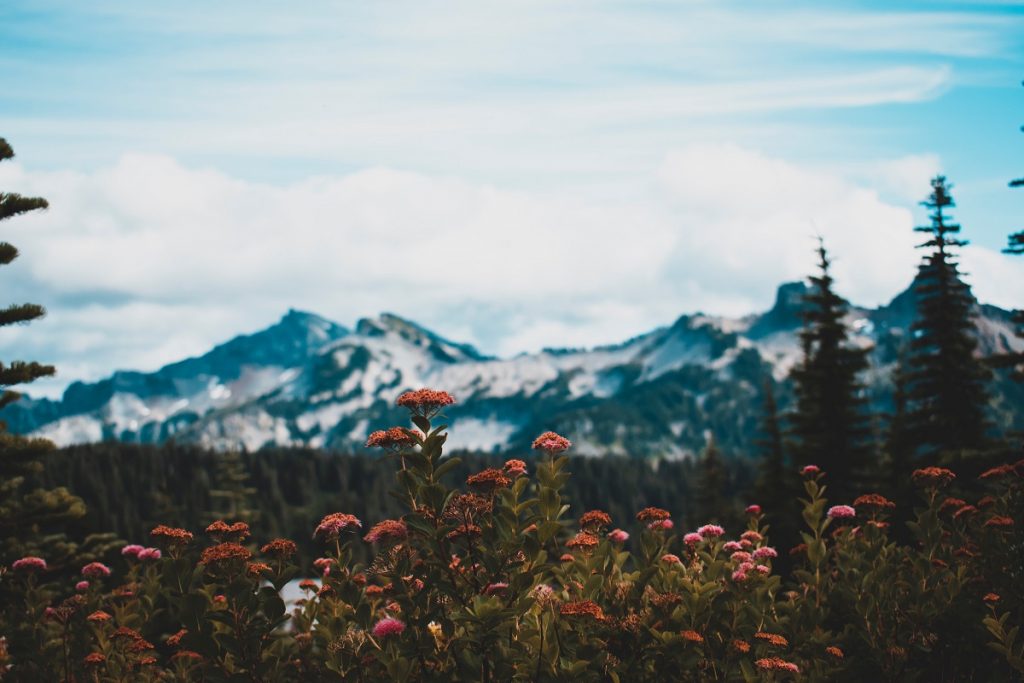
35. Olympic National Park
In the west portion of the impressively diverse park lies the Hoh Rainforest. The temperate rainforest is recognized as a World Heritage Site and a Biosphere Reserve by UNESCO due to its unique ecosystem that’s home to mossy trees, giant banana slugs, bright-colored fungi, and more. Another remarkable part of the park is along Hurricane Ridge, where you’ll often find fabulous views of mountain peaks hovering among the clouds. You'll find that some of the best hikes in Olympic National Park offer the most picturesque landscapes worth capturing.
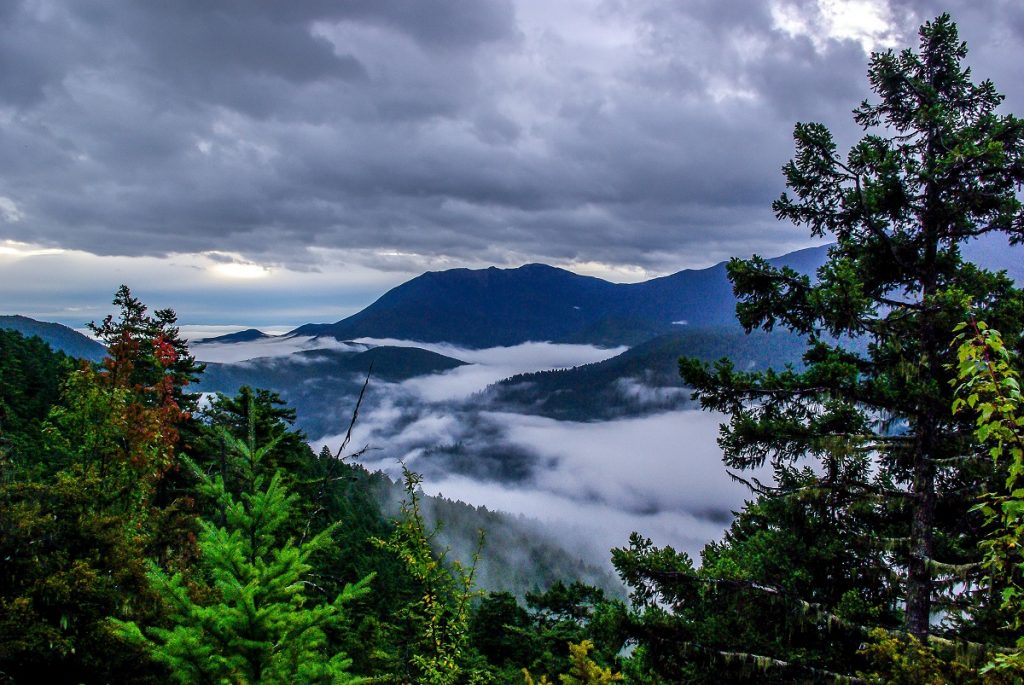
Bonus: Wyoming
36. Jackson Hole
A nature lover’s paradise, Jackson Hole is a short drive from two of the most famous national parks, the Grand Tetons and Yellowstone, both of which offer magnificent photo opportunities with their distinct features and bountiful wildlife. Schwabacher’s Landing and String Lake are both great spots to soak in the view of the Tetons, while Lower Geyser Basin and the Yellowstone Grand Canyon are a must-see in Yellowstone. There’s plenty of beauty beyond the national parks too, such as Rendezvous Peak, and the charming town of Jackson Hole itself.
Read Nature Untamed: Where to Backpack in Wyoming
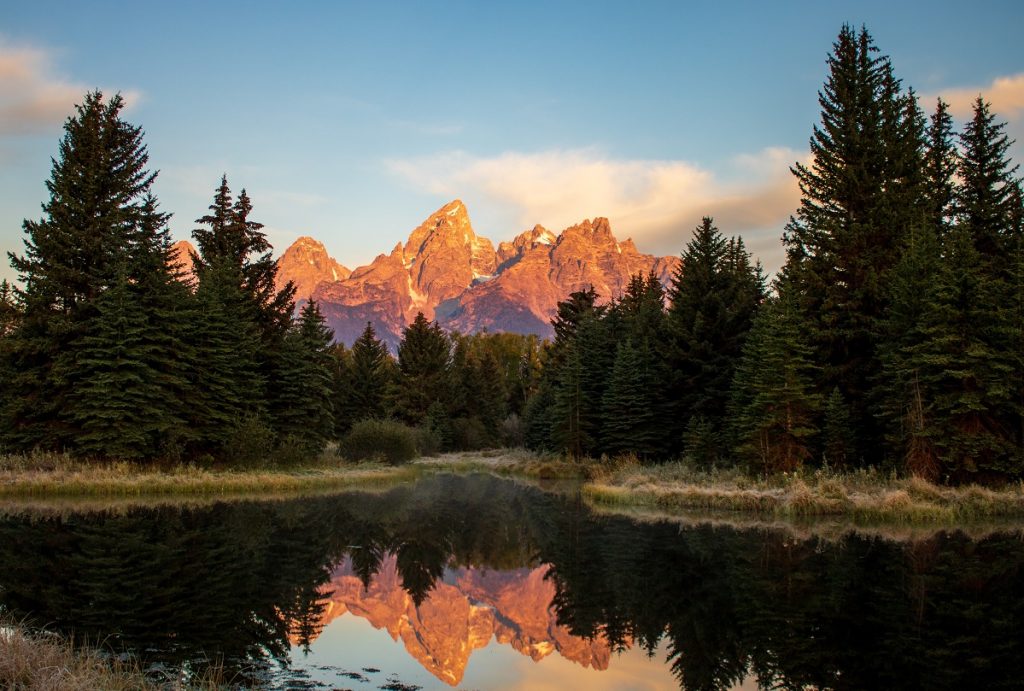
Tag Us In Your Photos
We’d love to see where you go. Tag us on Instagram @kuhl for a chance to be featured. KÜHL encourages an active lifestyle and an appreciation for the outdoors, whether that’s “glamping” with friends or roughing it on an unforgettable backpacking trip. And don’t forget to take (photos of) the road less traveled!
